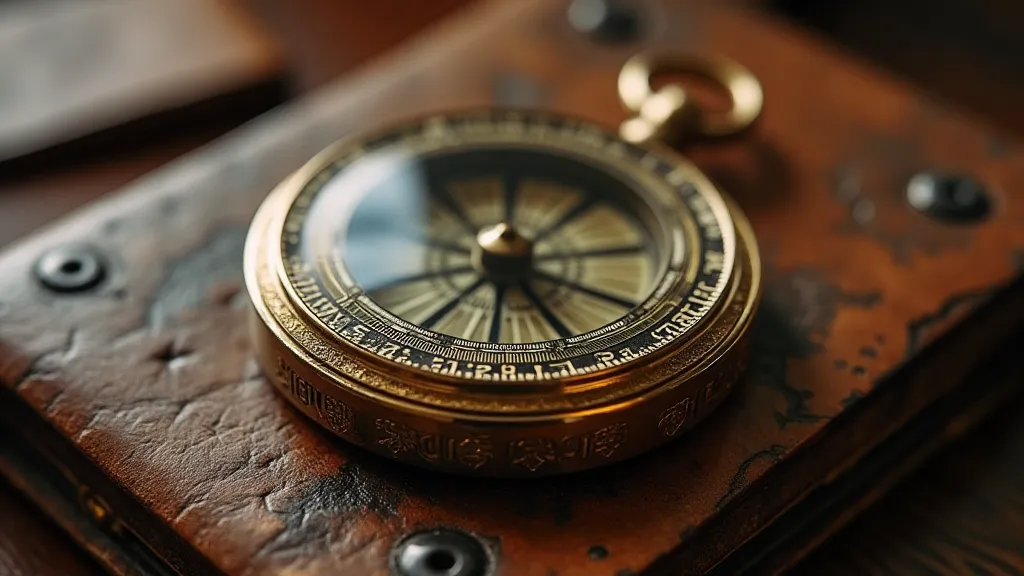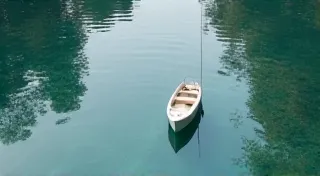The Cartographer's Compass: Mapping Magnetic Anomalies
There's a particular scent associated with old tools – a blend of oiled wood, aged metal, and the whispers of countless hands that have shaped them. I first encountered it years ago, rummaging through a dusty antique shop in rural Vermont. I wasn’t looking for anything specific, just soaking in the quiet stories held within each object. It was an accordion, beautiful and broken, that truly captivated me. Its bellows were cracked, its keys stuck, but its spirit felt strangely vibrant. The craftsman’s touch, the intricate design – it resonated with a history I couldn't quite grasp, a silent testament to the human desire to create, to build, to leave a mark. The careful arrangement of reeds, the meticulous crafting of the bellows – all spoke of a deep understanding of materials and mechanics.
That accordion, in a way, became my gateway to an appreciation for precision and measurement. It made me wonder about the tools the craftsman himself would have used: the calipers, the rulers, the levels – instruments demanding accuracy, allowing him to translate an idea into tangible reality. And within that realm of precision lies the fascinating world of magnetism, a force often invisible, yet profoundly influential, much like the subtle variations in an accordion’s construction that contribute to its final, unique voice. The resonance of each note, the nuanced tone – all are products of precise engineering and a deep understanding of how materials interact.

The Invisible Landscape: Detecting Magnetic Fields
Most of us are familiar with magnets – fridge magnets, toy magnets, perhaps a magnetic clasp on a handbag. But the Earth itself is a giant magnet, creating a magnetic field that shields us from harmful solar radiation and guides migratory birds. And within that overarching field exist countless smaller anomalies, localized variations that can be surprisingly revealing. Mapping these anomalies, much like a cartographer maps terrain, allows us to understand the hidden processes occurring beneath the surface. Think of it as listening to the Earth's faint heartbeat. The desire to chart this unseen world – to understand its patterns and predict its behaviors – is a driving force behind countless scientific and engineering endeavors.
The tools we need to begin this exploration are surprisingly simple. A basic compass is, of course, the starting point. But even a simple compass can reveal more than just north. Notice how the needle wavers as you move it around the room? That’s influenced by anything metallic nearby – iron pipes in the walls, electrical wiring, even the metal frame of your computer. The key is to understand those influences, to learn to differentiate between background noise and genuine magnetic variation. Learning to interpret these subtle shifts is akin to a detective uncovering clues, piecing together a larger picture.
More sophisticated tools, like Gaussmeters, offer a more quantitative measurement of magnetic field strength, allowing you to create a map showing relative field intensity. You don’t necessarily need a professional-grade instrument, though. DIY options abound, using Arduino microcontrollers and Hall effect sensors to build your own simple magnetic field detectors. These projects perfectly embody the spirit of experimentation and ingenuity that drives so many makers and hobbyists. The ability to build your own instruments to explore the natural world is a powerful and empowering skill. It echoes the ingenuity found in early instrument makers, who crafted tools to measure and understand the phenomena around them. Perhaps you've ever considered using these principles to explore building circuits with repulsion and attraction, for example.
Crafting with Magnetism: DIY Magnetic Devices
The principles of magnetic field mapping directly translate into practical project possibilities. Imagine building a miniature "magnetic anomaly detector" for your garden, pinpointing areas with unusually high magnetic fields, which could indicate buried metal or even geological features. Or consider a project focusing on magnetic levitation – a classic demonstration of magnetic forces at play. Building a levitating globe or a small, floating platform is not just a visually stunning achievement; it’s a hands-on lesson in understanding magnetic repulsion and equilibrium. These projects spark a sense of wonder and inspire further exploration.
Consider the challenge of creating structures that defy gravity, seemingly suspended in mid-air – a tangible demonstration of the power of magnetic forces. This fascination with levitation extends beyond simple demonstrations; it’s a pursuit with implications for transportation, manufacturing, and even space exploration. To truly understand the principles at play, one might explore how these forces interact with the environment and influence the behavior of materials.
These projects are intrinsically linked to the history of invention. Early inventors, like William Sturgeon with his electromagnet, relied on careful observation and experimentation to unlock the power of magnetism. Sturgeon's electromagnet, a relatively simple device, paved the way for countless subsequent innovations, from electric motors to magnetic resonance imaging. Even the humble accordion owes a debt to magnetic principles; the magnets in some electric bellows systems control airflow, providing a more consistent and controllable sound. The journey from simple observation to complex technological advancements is a testament to human curiosity and ingenuity. For a broader understanding of these concepts, one might delve into how magnetism influences other aspects of our world – perhaps examining creating robotic sculptures with magnetic attraction and dissociation for an artistic and insightful approach.

Safety and Respect: Working with Magnetic Fields
While fascinating, magnetism isn’t without its potential hazards. Strong magnetic fields can interfere with pacemakers and other implanted medical devices, and prolonged exposure to high fields can have unknown effects on human health. Always maintain a safe distance from powerful magnets, and avoid allowing them to come into contact with sensitive electronics. The responsible exploration of any natural phenomenon requires a mindful approach, prioritizing safety and minimizing potential risks.
Moreover, there's a certain ethical consideration involved in magnetic field exploration. Mapping anomalies on private property requires permission. And responsible exploration means respecting the environment and minimizing disturbance. The spirit of discovery shouldn't come at the expense of stewardship. This commitment to responsible innovation applies across all scientific and technological pursuits. Sometimes, the most significant discoveries arise not from conquering nature, but from understanding it – and respecting its boundaries.
The Legacy of Craftsmanship: A Magnetic Echo
The antique accordion, that first spark of appreciation for meticulous creation, remains a powerful reminder of the human drive to understand and manipulate the world around us. Whether you're building a simple magnetic anomaly detector or tackling a more ambitious levitation project, you’re participating in a tradition of innovation that spans centuries. You’re embracing the spirit of the cartographer, charting an invisible landscape, and uncovering the subtle patterns that shape our world. The desire to create lasting impact, like the accordion maker who carefully assembled each component, inspires us to approach our own endeavors with dedication and care.
Consider the care taken by the accordion maker – the selection of materials, the precision of the cuts, the painstaking assembly of countless tiny components. That same dedication to detail can inform your own magnetic projects, transforming them from mere experiments into lasting works of ingenuity. The magnetic echo of the past resonates in the present, inspiring us to explore, to create, and to leave our own unique mark on the world. Exploring beyond basic principles, one might consider how magnetic fields influence artistic expression, like those demonstrated in building robotic sculptures using magnetic force. Furthermore, for those interested in the broader implications of magnetic navigation, studying navigation by magnetic anomaly offers a fascinating perspective. Finally, consider the profound link between creativity and exploration – a concept beautifully encapsulated in cultivating creativity through exploration.
The pursuit of understanding is a continuous journey, fueled by curiosity and a desire to leave a lasting legacy. The magnetic echo of generations past resonates in every experiment, every invention, and every act of creation.






